Every Taiwanese child knows that the Dutch once came to Taiwan. They also know that they were driven away by Koxinga, a pirate turned patriot of Chinese-Japanese descent who was little more than an opportunist. It's a fact nonetheless that gives rise to warm feelings of nationalism at colonial powers getting their just deserts.
Scratch at this veneer of knowledge and most people know little more. And these days, beyond the ubiquitous presence of Philips household electronics, few people know there remains a significant Dutch presence on the island.
The reason the Dutch are here hasn't changed much. Their arrival in 1624 coincided with a conflict of interest between European powers that were positioning themselves to benefit from new Asian markets and from the sale of exotic commodities such as silk and spices. In 2000, western corporations still drool over the riches that Asian markets are expected to yield. The rules of the game may have become a bit more genteel, but fundamentally they remain the same. "The commercial spirit remains strong," says Paul Zeven, CEO of Philips Electronics, Taiwan, with a wry smile.
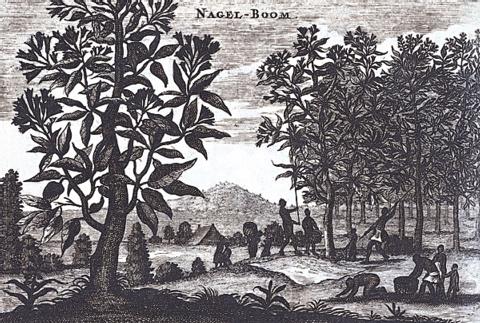
HISTORICAL PRINTS: COURTESY OF PAUL OVERMAAT
Zeven points out that Philips is now heavily invested in Taiwan's high-tech industry, in which it hopes to play a leading role. Yet despite its 30 years on the island and more than 10,000 staff, its presence is still relatively low-key. This was not always the case with the Dutch. While in Taiwan, they established two of the island's most imposing fortresses -- Fort Zeelandia in Tainan and Fort San Domingo in Tamsui.
Detailed records
But apart from ruins, what else did the Dutch leave behind? Cao Yung-ho (曹永和), a specialist on the Dutch maritime empire at Academia Sinica, says you only have to stand in the countryside and look around. The fields of rice and sugarcane, two of Taiwan's most important crops, are primarily due to Dutch exploration of the island's agriculture.
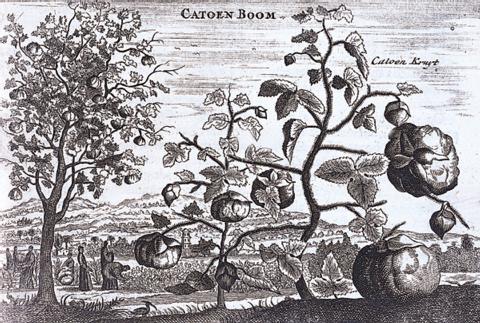
HISTORICAL PRINTS: COURTESY OF PAUL OVERMAAT
Another permanent and valuable contribution made by the Dutch was in providing some of the earliest detailed descriptions of life in Taiwan. The Dutch in Fort Zeelandia kept "day books," similar to a ship's log, which became invaluable historical documents in the study of Taiwan's early history.
For a taste of what the Dutch left behind, organizers of a recently opened exhibit titled "From Holland to Formosa" have created the newspaper-like Formosa Gazetteer, which offers extracts from historical records. Speaking of the unhealthy conditions that faced the Dutch, there is a matter-of-fact comment from 1649 that "many people in the service of the Dutch East India company died again this year in the southern villages on the island [from disease]." And for Oct. 25, 1645, records show that the "Chinese who are continuously inciting the natives have been subdued and chased away." These minor but often fatal incidents were the daily trials that comprised life and death for many Dutch living in Taiwan.
Based on other materials left by the Dutch, the Shung Ye Museum of Formosan Aborigines (順益台灣原住民博物館) has already published one of the earliest studies of Taiwan's aborigines. This is available in English with a Chinese version in preparation.
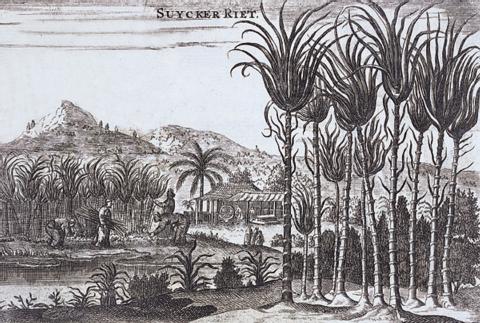
HISTORICAL PRINTS: COURTESY OF PAUL OVERMAAT
One of the most important results the preservation of these early materials is the reaffirmation of Taiwan's fundamentally multicultural roots. Everything about "From Holland to Formosa" seems designed to emphasize the cooperative nature of Taiwan's development. The venue itself is virtually a distillation of Taiwan's relationship with the west. The Dutch built Fort San Domingo, but the name is taken from an earlier Spanish stockade. The building was taken over by the British in 1860 and was not formally transferred to the ROC government until 1980.
Monumental venue
Holding the exhibition at this historic site has also inspired the Taipei Civil Affairs Department to alter its perceptions of what can be achieved with Taiwan's historic monuments. This is the first time that the venue has been loaned out for such a purpose, largely due to the efforts of Robin Ruizendaal, director of the Holland Festival and an organizer of the event.
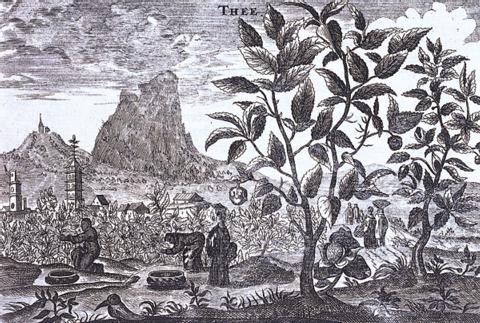
HISTORICAL PRINTS: COURTESY OF PAUL OVERMAAT
Moreover, during the exhibition, the grounds of Fort San Domingo will be opened at night for the first time (each Saturday). This has partially been made possible by Philips, who has provided lighting for inside and outside the fort. Lin Tsyr-ling (林慈玲), the newly appointed head of the Civil Affairs Department, is currently negotiating to have the external lighting loaned by Philips made into permanent fixtures to allow for regular night openings to make this heritage site a more dynamic tourism location.
The exhibition organizers have gone out of their way to make the event truly accessible, with a particular emphasis on young visitors. The exhibition is introduced by four cartoon children, who lead the way through an exploration of the Dutch and their lives and concerns in Taiwan. These children form part of a dynamic interface between the exhibits and the audience. After all, as Ruizendaal points out, "one map of Taiwan looks pretty much like another," unless you do something with the arrangement of objects to highlight points of interest.
As for the bigger picture, Seibe Schuur of the Netherlands Trade and Investment Office saw the project as an affirmation of the cooperation between Taiwan and the Netherlands. "Taiwan has always been at a crossroads of many cultures," he says. "There are lessons we can learn from the past that can be applied to the future."
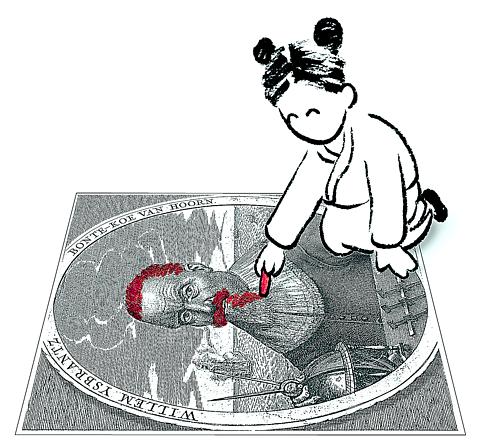
ILLUSTRATION: COURTESY OF NISAN WU
For your information:
What: From Formosa to Holland
An exhibition of 17th century Dutch culture
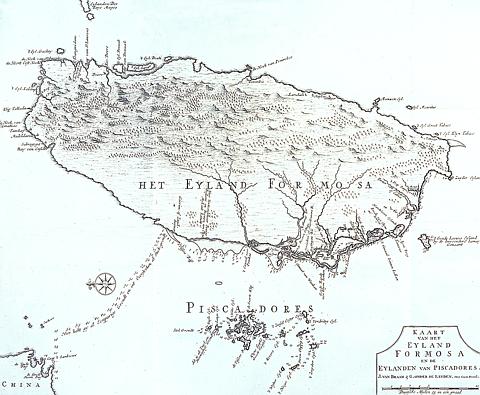
HISTORICAL PRINTS: COURTESY OF PAUL OVERMAAT
When: Until June 30
Where: Fort San Domingo (Hung Mao Cheng, 紅毛城), Tamsui

May 18 to May 24 Pastor Yang Hsu’s (楊煦) congregation was shocked upon seeing the land he chose to build his orphanage. It was surrounded by mountains on three sides, and the only way to access it was to cross a river by foot. The soil was poor due to runoff, and large rocks strewn across the plot prevented much from growing. In addition, there was no running water or electricity. But it was all Yang could afford. He and his Indigenous Atayal wife Lin Feng-ying (林鳳英) had already been caring for 24 orphans in their home, and they were in

Even by the standards of Ukraine’s International Legion, which comprises volunteers from over 55 countries, Han has an unusual backstory. Born in Taichung, he grew up in Costa Rica — then one of Taiwan’s diplomatic allies — where a relative worked for the embassy. After attending an American international high school in San Jose, Costa Rica’s capital, Han — who prefers to use only his given name for OPSEC (operations security) reasons — moved to the US in his teens. He attended Penn State University before returning to Taiwan to work in the semiconductor industry in Kaohsiung, where he

On May 2, Chinese Nationalist Party (KMT) Chairman Eric Chu (朱立倫), at a meeting in support of Taipei city councilors at party headquarters, compared President William Lai (賴清德) to Hitler. Chu claimed that unlike any other democracy worldwide in history, no other leader was rooting out opposing parties like Lai and the Democratic Progressive Party (DPP). That his statements are wildly inaccurate was not the point. It was a rallying cry, not a history lesson. This was intentional to provoke the international diplomatic community into a response, which was promptly provided. Both the German and Israeli offices issued statements on Facebook

Australia’s ABC last week published a piece on the recall campaign. The article emphasized the divisions in Taiwanese society and blamed the recall for worsening them. It quotes a supporter of the Taiwan People’s Party (TPP) as saying “I’m 43 years old, born and raised here, and I’ve never seen the country this divided in my entire life.” Apparently, as an adult, she slept through the post-election violence in 2000 and 2004 by the Chinese Nationalist Party (KMT), the veiled coup threats by the military when Chen Shui-bian (陳水扁) became president, the 2006 Red Shirt protests against him ginned up by